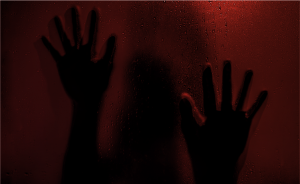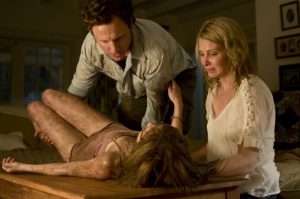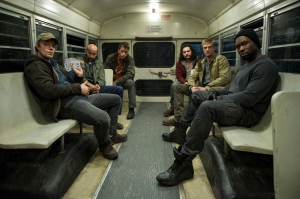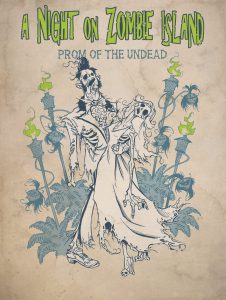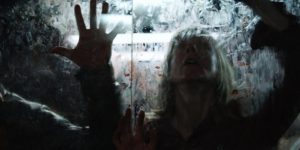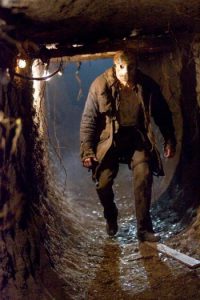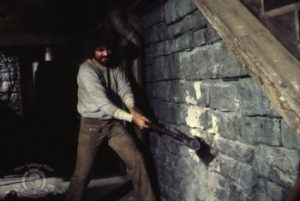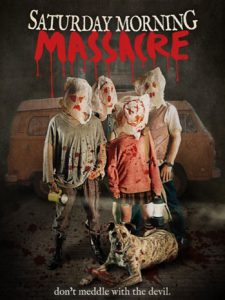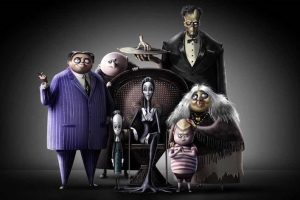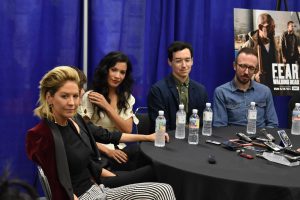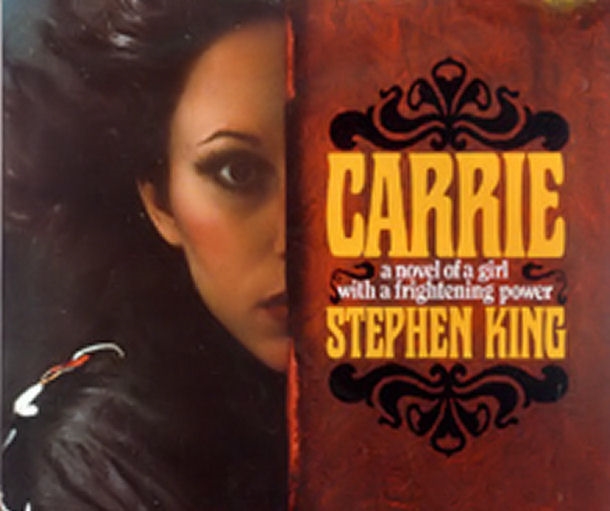
10 Ways Stephen King’s Carrie Changed Horror
This month marks the fortieth anniversary of Stephen King’s debut novel, Carrie. While this article technically missed the official anniversary back on the 5th, I’ve found myself pondering a certain ineradicable loner ever since learning of the ceremonious four-decade occasion. What is it about the 1974 book that has inspired countless reprints, four films, and a horribly off-target Broadway musical?
After visions of pig’s blood haunted me day and night, I decided to compose a list of why the story and its offspring are so essential to the horror genre. Now that I’ve paid appropriate homage, maybe polyester suits and Saint Sebastian crosses will let me rest.
So here are ten ways that Carrie altered the landscape of horror. And after nearly half a century, its influence is still going strong.
1. Made horror literature viable again
Although so-called intellectuals often want to discount horror altogether, the genre has been a true stalwart of literature, quietly terrifying readers during their waking hours as well as through countless evenings of nightmares. Without the likes of Poe, Stoker, and Shelley, books in general would be sorely lacking that je ne sais quoi we all know and love.
But the greats weren’t all Gothics and Romantics. The mid-twentieth century saw the rise of several more indelible voices in horror, including Ray Bradbury, Richard Matheson, Rod Serling, and Shirley Jackson. But by the time the ‘Me Decade’ commenced, things had started to settle down again, and horror, though alive and well in cinema, looked like it could fall to the wayside in fiction. After all, publishers are always searching for an excuse to declare horror as lacking in commercial appeal.
Then along came an English teacher from Maine to shake everything up. Carrie became his first foray into a genre with which he’s now practically synonymous. Today, he’s still one of the most recognizable names in popular fiction, and that’s not even specifying horror. Love him or hate him, he’s changed our world forever.

2. Proved book-to-film adaptations can be great
As a matter of near daily obsession since basically birth, I make a habit of studying horror movies. Everything from the acting to the effects and the cinematography to the costume design manage to wedge themselves in my brain for future reference.
About five years ago, I came to what now seems like a self-evident conclusion: Carrie is as close to a perfect horror movie that may ever exist. This isn’t to say it’s my absolute favorite (that would probably still be Texas Chain Saw) or that it’s entirely faultless (cringe as John Travolta tries to deliver a believable line reading!). But in terms of a shot-by-shot exercise in celluloid excellence, I believe–with gore-loving conviction I might add–that it even outdoes that other King adaptation that everyone loves so much. And no, I’m not talking about Christine.
Director Brian de Palma spent months storyboarding the film, and the prep work proved time well spent. The composition of every scene is so precise yet never overdone. And that continuous crane shot in the gymnasium! In the days before steady-cam, the prom scene that starts on the ballots and ends with the coronation ranks as one of the greatest celluloid accomplishments. Despite dozens of previous viewings, every time I watch it, it still gives me chills.

3. Transformed adolescent milestones into horror tropes
Way before Twilight tried to pretend it could use horror to channel angst, Carrie had already demonstrated how well the genre dovetails with the daily dread that accompanies adolescence.
And it’s not just the “plug it up” menstruation scene, which did for communal showers what Psycho did for private ones. Carrie immortalized prom, first love, and mean girls. For those of us who didn’t live through the seventies, it’s easy to forget that Halloween didn’t show up until two years later. Carrie was one of the first films to look to high school for guidance in crafting the greatest horror a generation had ever seen. That’s how scary it is to be a teenager.
Not everyone was in on the joke however. Art director Jack Fisk commented that after the film’s release, every prom seemed to repurpose Carrie’s starry décor. You have to wonder if the student committees choosing themes ever considered the irony of paying tribute to the world’s worst formal. Probably not. They were too busy voting for the night’s King and Queen.

4. Made a female character a strong protagonist
As a major issue still plaguing horror films to this day, not every genre movie gives women their due. Far too often, female characters make dubious choices and play no particular role in their own salvation.
But Carrie served as the exception long before it was trendy to do so. Neither the book nor the movie whitewashes the perils of being a girl, whether it’s bodily changes turning against you or those people who ought to be your friends. But perhaps most impressive of all, Carrie is not just for girls. Though the lead might be female, the painful experiences are ones that anybody who’s ever felt like an outsider can appreciate. And that universality, more than anything else, is what makes Carrie a timeless work of art.

5. Made a female character a strong antagonist
The opening shot of Carrie White failing to wallop a volleyball over the net doesn’t exactly give the audience the impression of surreptitious strength. And rightfully so. Part of the fun in Carrie is getting to see her transformation from weakling to monster. That’s the same appeal that governs, say, The Toxic Avenger or even Cronenberg’s version of The Fly. As any Intro to Psychology course has taught us, Jung’s Other archetype is a perpetual outcast and any attempt to integrate almost never ends well.
But as much as the metamorphosis has become something of a trope, very few films can do it well. The fact that Carrie as a book and then a film managed to make over a primary character from a mousy lead into a formidable opponent speaks volumes to the quality of the material. Carrie’s been called a reverse Cinderella story. If only every Disney movie could turn out so powerful.

6. Dealt with bullying before it was a hot button issue
Though most of us rarely admit it, at least about ourselves, horror is often the stomping ground for society’s coolest misfits. Consequently, many of you reading this probably remember being bullied in high school. I sure do. Being the little Goth girl who loved slashers in a Podunk town that cared only about its lousy sport teams was like endeavoring every day to take a trip to Mordor…without Gandalf. Or the eagles. Or even a damn elf. But I digress (and mix fantasy and horror metaphors apparently).
The point is, before bullying became something people actively condemned, everyone used to give silent consent and tell you to suck it up if you were being picked on. But even when the adults failed you, you still had Carrie, the original poison pen letter to bullies everywhere. Its greatest lesson? Don’t screw with the weird kids. You don’t know what kinds of inexplicable powers are lurking just beneath that odd exterior.

7. Gave us every single Stephen King book & film that’s come since
I once read a yarn about how King was walking out the door to sell his typewriter when the acceptance letter for Carrie arrived. While that might not be the truest story ever told–at the very least, the typewriter belonged to his wife, not him–the sentiment is still an important one for horror. If the little book about the ultimate misfit hadn’t sold, King might have packed it all in and returned to his quiet life as a Maine schoolteacher. As a writer who hopes one day to prove even half as prolific as King, I sincerely doubt he would have given up quite so easily, but it’s hard to know for sure.
Therefore, without Carrie, we might never have visited the Overlook Hotel in The Shining, learned to be careful where you bury your pets (and children) in Pet Sematary, or worried that undead kids might be floating outside our window a la Salem’s Lot. In short, Stephen King has opened up a world unlike any other author’s, and it all started with Carrie. Quite an accomplishment, considering that at just under two-hundred pages, it’s one of his shortest works.

8. Got horror nominated for major Oscars
No horror fan can pretend–with a straight face, anyhow–that the Academy is some reliable marker of quality in Hollywood. It’s a better indicator of pretension and cronyism, and in the dead of every winter, earns the title of smarmiest, snobbiest night in television.
But all that said, plenty of people do still care about the Oscars. So when a relatively low-budget horror movie based on the book of a debut author earns nods for Best Actress and Best Supporting Actress, it means something. And yes, in the annals of horror, 1973’s The Exorcist received more nominations–ten versus Carrie’s two–but that film benefited from a far larger budget and several actors who were already established in Hollywood. Plus, the supporting cast didn’t feature as much as a cameo from John Travolta, the ultimate handicap for any movie.
On Oscar night, Carrie didn’t take home any statuettes, but the esteem directed at Sissy Spacek’s Carrie White and Piper Laurie’s Margaret White somehow seems more incredible in retrospect. Short of Black Swan, which I bet some readers don’t even consider genre, horror has been notably absent outside of Makeup and Effects nominations for the better part of two decades. Still, as Carrie proved, sometimes horror is so good, even a begrudging Academy has no choice but to acknowledge it.

9. Showed us (more than once) that remakes are no good
Try to remember back before the recent onslaught of remakes. I know, I know. It’s hard to do since we’ve been forced to endure a full decade of endless regurgitated horror. But in 2002, just before remakes became the norm, Carrie turned into an early casualty, and the book has now been retooled twice since the 1976 classic. And don’t even get me started on that self-serious musical from the late eighties. Or that sequel that I always (try to) forget about. Two remakes are more than enough.
With a tacked-on happy ending that destroys the spirit of the novel, the made-for-TV disaster collapsed into a thorough mess, at best contrived and at worst outright blasphemous. Granted, the perpetually underrated Angela Bettis does manage to salvage the 2002 version from being a total loss. Unfortunately, last year’s curiously sanitized version could not claim the same.
Although it initially jockeyed to craft a closer adaptation of the source material, Kimberly Peirce’s finished product felt like everything that makes nouveau horror so bad: lacking in gore and more importantly, lacking in soul. And as much as I love Chloë Moretz, no actress whose part-time job includes the title “Aeropostale model” should ever play Carrie. Period. (Oh come on, this article required at least one menstrual joke.)

10. Reminds us why we’re so happy high school’s over
Anytime someone reminisces about high school being the best time of a person’s life, I want to pat them on the shoulder and offer condolences. There’s nothing wrong with a little nostalgia, just as long as you don’t lose sight of reality. And watch one scene or read one chapter of Carrie, and you’ll receive a stark reminder as to why being a teenager sucks. Questionable fashion choices? Check. Irredeemably mean student body? Check. Constant humiliation through both internal self-torture and external bullying? Every awful part of pre-adult life is on tap here, and it’s displayed in a true kaleidoscope of misery.
So the next time somebody you know waxes philosophically about the wonders of youth, stream the 1976 version of Carrie for immediate required viewing. Or hand over your Kindle download of the book. Either way, you’ll be offering the greatest gift of all: restoration of reality via horror.

So Happy Birthday, Carrie White. You might not have made it out of high school, but you sure helped us through it.



